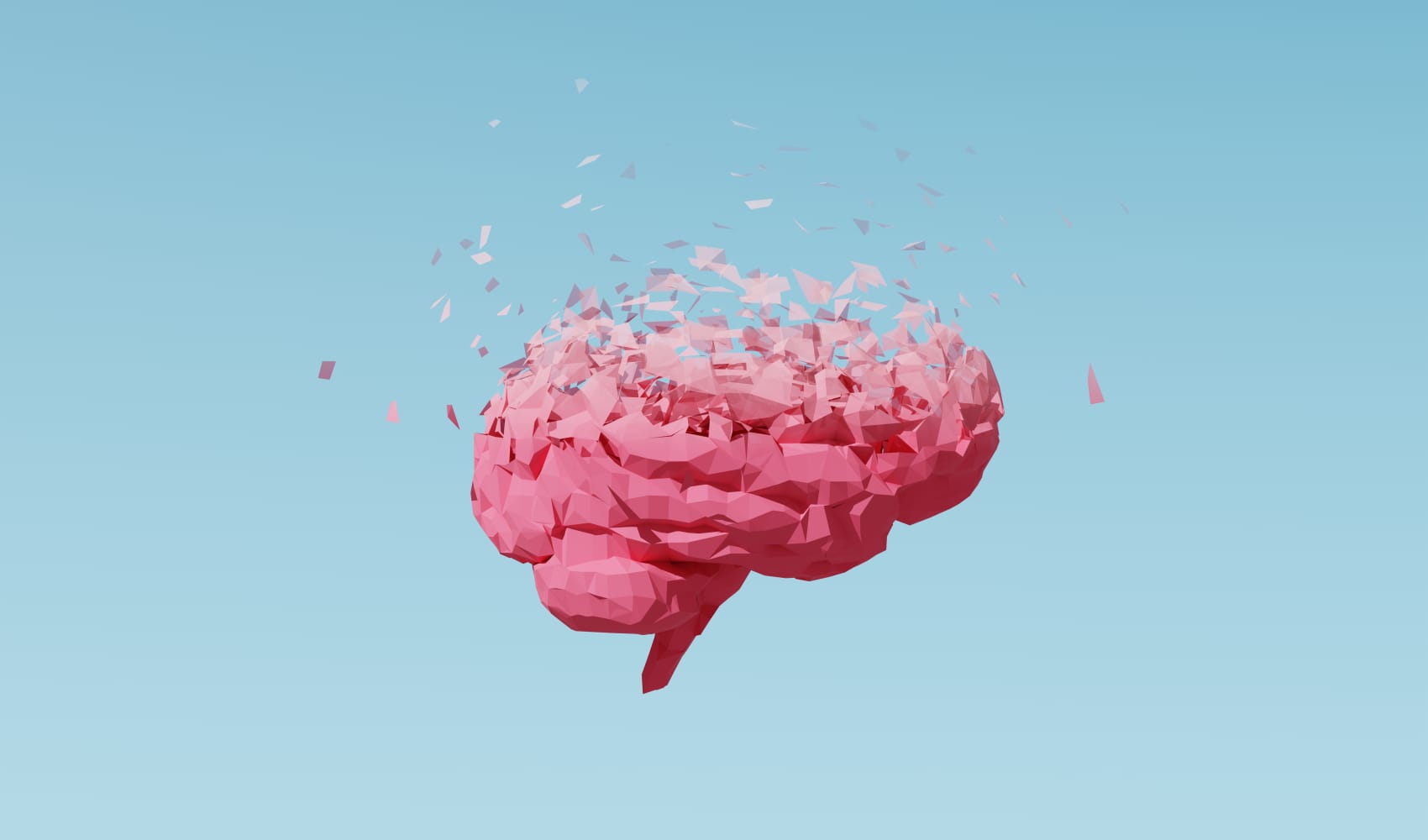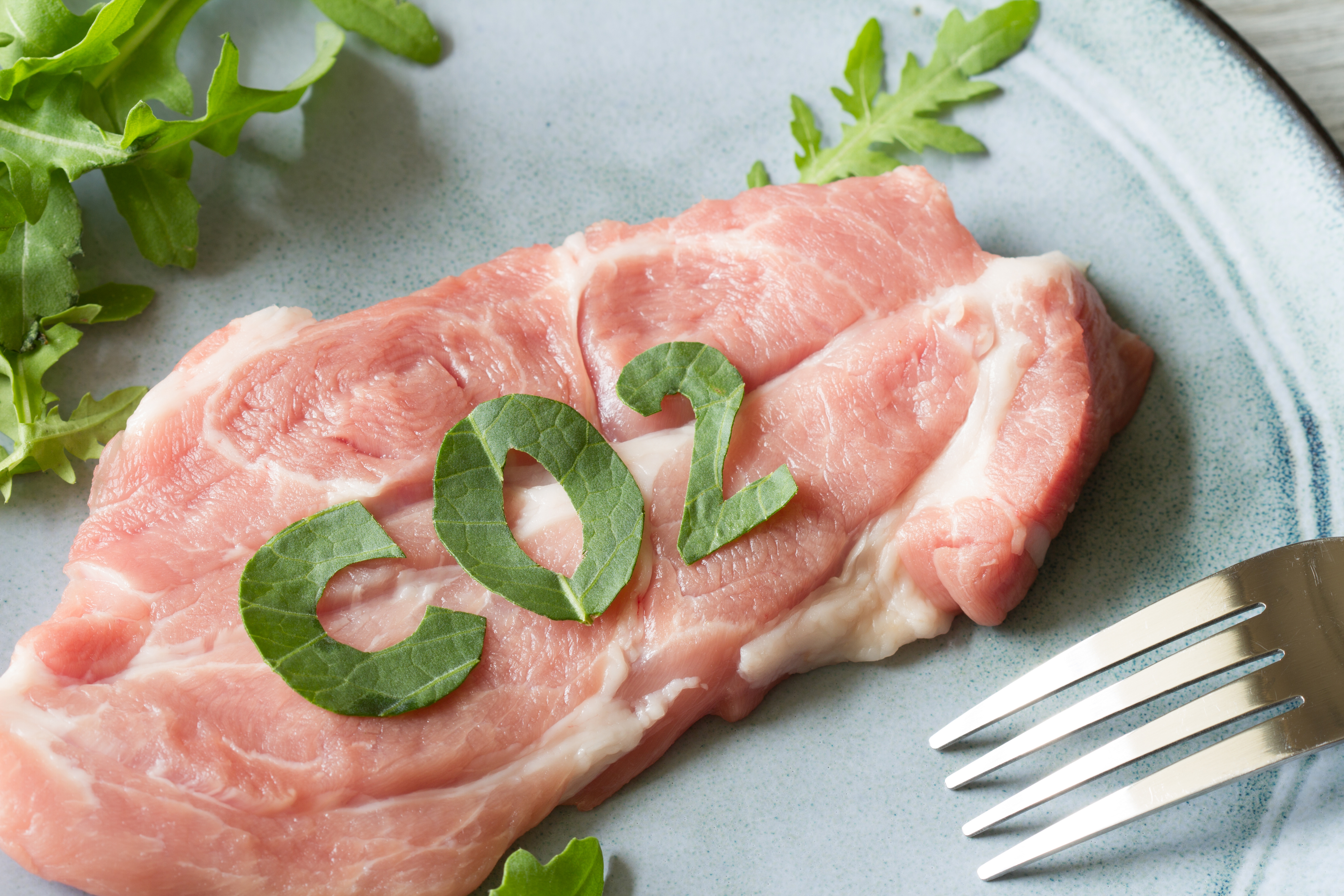Neurologist Reveals: 3 Youth Mistakes I'd Never Make Now
Neurologist's Regret: 3 Things I Wish I Knew Sooner
Introduction: Hindsight is 20/20… or is it?
As human beings, we often dwell on “what ifs” in life, like this one: “What if I had done things differently when I was younger?”
While I don’t encourage this type of thinking — it can create unnecessary anxiety and stress over things we cannot change — it’s still valuable to reflect on past mistakes and lessons. Doing so can help us grow into improved versions of ourselves. But it’s even better if we can learn from others’ mistakes before we make them too.
As a neurologist, I look back on my younger years through the lens of neuroscience and brain health. It gives me a unique perspective on things I wish I had done differently.
Here are three that stand out that I regret doing — and that you might still be able to avoid:
1. The Soda Siren: A Sweet Deal with the Devil
When I was a teenager, my parents and I didn’t fully understand the harm excessive sugar intake could have on my health. Every day after school, I drank one or two cans of soda. It was cheap, readily available, and offered that instant sugar rush. Sounds familiar?
The Brain on Sugar: A Recipe for Disaster
Now, armed with a deeper understanding of neuroscience, I realize the damage I was inflicting. Excessive sugar consumption is linked to a multitude of brain-related issues, including impaired cognitive function, memory problems, and an increased risk of neurodegenerative diseases like Alzheimer's. Think of it like constantly revving your car engine in neutral – it might feel good temporarily, but you’re causing long-term damage.
Beyond the Brain: The Body Suffers Too
It’s not just the brain that suffers. That daily soda habit contributes to weight gain, insulin resistance, and an increased risk of type 2 diabetes. And what affects the body, ultimately affects the brain. Imagine your body as a beautifully orchestrated orchestra; sugar throws it all out of tune.
The Takeaway: Rethink Your Drink
If you're still hooked on sugary drinks, start gradually reducing your intake. Opt for water, unsweetened tea, or naturally flavored sparkling water instead. Small changes can make a big difference in the long run. Consider it an investment in your future brain health.
2. Sleep? What Sleep? The All-Nighter Addiction
Ah, the classic college student's dilemma: choosing between sleep and studying. I consistently chose the latter, pulling all-nighters fueled by caffeine and sheer willpower. I thought I was being productive, but I was actually sabotaging my brain.
The Neuroscience of Sleep Deprivation
Sleep is absolutely crucial for brain health. During sleep, our brains consolidate memories, clear out toxins, and repair themselves. Skimping on sleep is like refusing to let your brain recharge. Think of your brain as a phone; without charging, the battery eventually dies.
Cognitive Consequences: A Price Too High to Pay
Chronic sleep deprivation can lead to impaired concentration, difficulty learning, mood swings, and increased stress levels. Those all-nighters might have helped me cram for exams, but they also hindered my ability to retain information and think clearly. In essence, I was borrowing from tomorrow's cognitive abilities to pay for today's perceived productivity.
Prioritize Your Pillow: A Prescription for a Healthy Brain
Make sleep a priority. Aim for 7-9 hours of quality sleep each night. Establish a regular sleep schedule, create a relaxing bedtime routine, and avoid screens before bed. Your brain will thank you for it. Treat sleep not as a luxury, but as a necessity for optimal cognitive function.
3. Ignoring the Whispers: Dismissing Early Mental Health Concerns
In my younger years, I experienced periods of stress and anxiety, like many people do. But I often brushed them aside, thinking I could handle it on my own. I now realize this was a mistake.
The Importance of Early Intervention
Ignoring mental health concerns can have serious long-term consequences for brain health. Chronic stress and anxiety can alter brain structure and function, increasing the risk of depression, anxiety disorders, and even cognitive decline. Think of it like a small crack in a windshield; if left unattended, it can spread and eventually shatter the entire thing.
The Brain-Mental Health Connection: A Two-Way Street
Mental health and brain health are inextricably linked. What affects one affects the other. Addressing mental health concerns early on is crucial for protecting and promoting brain health.
Seeking Support: It's a Sign of Strength, Not Weakness
Don't be afraid to seek professional help if you're struggling with mental health issues. Therapy, counseling, and medication can be incredibly effective in managing these conditions and improving overall well-being. Seeking help is not a sign of weakness; it's a sign of strength and self-awareness. Find a trusted friend, family member, or mental health professional to talk to.
The Gut-Brain Axis: A Hidden Connection
We often think of the brain as being separate from the rest of the body, but it's intricately connected to our gut through the gut-brain axis. This complex communication network allows the gut microbiota to influence brain function, and vice versa.
How Gut Health Impacts Mental Clarity
A healthy gut microbiome can promote cognitive function and reduce inflammation in the brain. Conversely, an imbalance of gut bacteria, often caused by poor diet and stress, can contribute to brain fog, anxiety, and even depression. Think of the gut as your "second brain," constantly communicating with your primary brain to influence your thoughts and emotions.
Nourishing the Gut for a Healthier Mind
To support a healthy gut-brain axis, prioritize a diet rich in fiber, prebiotics, and probiotics. Include plenty of fruits, vegetables, whole grains, and fermented foods like yogurt, kefir, and sauerkraut in your diet. Minimize processed foods, sugary drinks, and artificial sweeteners, which can disrupt the balance of gut bacteria. Nurturing your gut is an investment in your overall well-being and cognitive function.
The Power of Exercise: Moving Your Body, Sharpening Your Mind
Physical activity isn't just good for your body; it's also essential for brain health. Exercise has been shown to improve cognitive function, boost mood, and reduce the risk of neurodegenerative diseases.
Exercise and Neuroplasticity: Rewiring Your Brain
Regular exercise promotes neuroplasticity, the brain's ability to adapt and rewire itself. It increases blood flow to the brain, stimulates the growth of new neurons, and strengthens connections between existing neurons. Think of exercise as fertilizer for your brain, helping it grow and thrive.
Finding the Right Fit: Enjoyable Activities for Sustainable Results
Choose activities you enjoy and can realistically incorporate into your daily routine. Whether it's walking, running, swimming, dancing, or cycling, find something that makes you feel good and keeps you motivated. Even small amounts of exercise can have a significant impact on your brain health.
The Social Connection: Nurturing Relationships for Cognitive Well-being
Humans are social creatures, and social interaction is crucial for cognitive well-being. Strong social connections provide emotional support, stimulate cognitive function, and reduce feelings of loneliness and isolation.
Social Isolation and Cognitive Decline: The Hidden Dangers
Social isolation has been linked to an increased risk of cognitive decline and dementia. Maintaining strong social connections can help protect against these risks by keeping your brain active and engaged. Think of social interaction as mental exercise, keeping your brain sharp and agile.
Building and Maintaining Meaningful Connections
Make an effort to connect with friends, family, and community members. Join clubs, volunteer, or participate in social activities. Nurturing your relationships is an investment in your cognitive health and overall well-being. Don't underestimate the power of human connection to keep your brain healthy and happy.
The Cognitive Benefits of Lifelong Learning
The brain, like any other muscle, needs regular exercise to stay strong and healthy. Engaging in lifelong learning activities can challenge your brain, improve cognitive function, and promote neuroplasticity.
Continuous Learning: A Workout for Your Brain
Lifelong learning helps keep your brain active and engaged, promoting cognitive reserve and protecting against cognitive decline. By continuously learning new things, you challenge your brain to adapt and rewire itself, strengthening neural connections and improving cognitive function. Think of learning as a brain workout, keeping your mind sharp and agile.
Pursuing Your Passions: Learning for the Joy of it
Choose learning activities that align with your interests and passions. Whether it's taking a class, learning a new language, reading books, or exploring new hobbies, find something that you enjoy and that challenges you mentally. Learning for the joy of it can be a powerful way to keep your brain healthy and engaged throughout your life.
Mindfulness and Meditation: Calming the Mind, Enhancing Focus
In today's fast-paced world, it's easy to get caught up in the chaos and stress of daily life. Practicing mindfulness and meditation can help calm the mind, reduce stress, and improve focus and concentration.
The Impact of Mindfulness on Brain Structure
Studies have shown that regular mindfulness practice can actually change the structure of the brain, increasing gray matter in regions associated with attention, memory, and emotional regulation. By training your mind to be present in the moment, you can reduce stress, improve focus, and enhance overall cognitive function. Think of mindfulness as a mental reset button, helping you clear your mind and regain clarity.
Simple Practices for Everyday Life
Incorporate mindfulness into your daily routine by taking a few minutes each day to focus on your breath, observe your thoughts and feelings without judgment, and appreciate the present moment. There are many guided meditation apps and resources available online to help you get started. Even a few minutes of mindfulness each day can have a significant impact on your brain health and overall well-being.
Avoid Processed Foods: Fuel Your Brain With Nutrients
What you eat has a profound impact on your brain health. Processed foods, often high in sugar, unhealthy fats, and artificial additives, can negatively affect cognitive function and increase the risk of neurodegenerative diseases.
The Damage Processed Foods Do To Your Brain
Processed foods can contribute to inflammation in the brain, impair cognitive function, and disrupt the gut-brain axis. They often lack essential nutrients that are crucial for brain health, such as omega-3 fatty acids, antioxidants, and vitamins. Think of processed foods as empty calories for your brain, providing little to no nutritional value and potentially causing harm.
Embrace a Whole-Foods Diet: Nourishing Your Brain Naturally
Prioritize a diet rich in whole, unprocessed foods, such as fruits, vegetables, whole grains, lean protein, and healthy fats. These foods provide your brain with the nutrients it needs to function optimally and protect against cognitive decline. Fueling your brain with a nutrient-rich diet is one of the best investments you can make in your long-term cognitive health.
Antioxidants: Protecting Your Brain from Oxidative Stress
Oxidative stress, caused by an imbalance of free radicals and antioxidants in the body, can damage brain cells and contribute to cognitive decline. Consuming antioxidant-rich foods can help protect your brain from this damage.
Combating Oxidative Stress With Antioxidants
Antioxidants neutralize free radicals and protect brain cells from oxidative stress, reducing the risk of cognitive impairment and neurodegenerative diseases. They also promote healthy blood flow to the brain and support overall brain function. Think of antioxidants as shields for your brain cells, protecting them from damage and keeping them healthy.
Load up on Colorful Fruits and Vegetables
Include a variety of colorful fruits and vegetables in your diet, such as berries, leafy greens, and brightly colored peppers. These foods are packed with antioxidants that can help protect your brain from oxidative stress. Eating a rainbow of fruits and vegetables is a delicious and effective way to boost your brain health.
Limit Alcohol Consumption: Protect Your Brain from Damage
While moderate alcohol consumption may have some potential health benefits, excessive alcohol use can damage the brain and impair cognitive function.
The Effects of Alcohol on Brain Function
Excessive alcohol consumption can damage brain cells, disrupt neurotransmitter function, and increase the risk of cognitive decline and dementia. It can also lead to nutritional deficiencies that further impair brain health. Think of alcohol as a toxin that can negatively impact your brain's structure and function.
Moderation is Key for Optimal Brain Health
If you choose to drink alcohol, do so in moderation. For women, this means no more than one drink per day, and for men, no more than two drinks per day. If you have a history of alcohol abuse or are concerned about your drinking habits, seek professional help. Limiting alcohol consumption is crucial for protecting your brain health and preserving cognitive function.
The Importance of Regular Check-Ups
Regular check-ups with your doctor are essential for monitoring your overall health and identifying any potential risk factors for cognitive decline. These check-ups can help you stay proactive about your brain health and address any issues early on.
Monitoring Your Health for a Clear Mind
Regular check-ups can help you monitor your blood pressure, cholesterol levels, and blood sugar levels, all of which can impact brain health. They can also help identify any underlying medical conditions that may contribute to cognitive decline. Think of regular check-ups as preventive maintenance for your brain, helping you catch any problems early on and keep your brain functioning optimally.
Staying Proactive for Long-Term Brain Health
Talk to your doctor about your concerns regarding brain health and any family history of cognitive decline. Together, you can develop a personalized plan for maintaining optimal brain health throughout your life. Being proactive about your brain health is one of the best investments you can make in your future.
Conclusion: Small Changes, Big Impact
Looking back, I realize that even small changes in my youth could have had a significant positive impact on my brain health. It's never too late to adopt healthy habits and prioritize your cognitive well-being. Ditching the daily soda, prioritizing sleep, and addressing mental health concerns are just a few examples of how you can protect and promote your brain health throughout your life. Remember, your brain is your most valuable asset, so take care of it!
Frequently Asked Questions (FAQs)
1. Is it really that bad to drink soda once in a while?
Occasional soda consumption is unlikely to cause significant harm, but the key is moderation. Regular, daily consumption is where the problems arise due to the high sugar content.
2. What if I can't get 7-9 hours of sleep every night?
While 7-9 hours is ideal, even getting consistent 6 hours is better than wildly fluctuating sleep schedules. Focus on sleep quality - a dark, quiet, and cool room can help. Also, try to catch up on sleep during weekends, but avoid drastically changing your sleep schedule.
3. How do I know if I need to seek professional help for mental health?
If you're experiencing persistent feelings of sadness, anxiety, or overwhelm that are interfering with your daily life, it's a good idea to reach out to a mental health professional. They can help you assess your needs and develop a treatment plan.
4. What are some easy ways to incorporate mindfulness into my day?
Start with just 5 minutes a day. Try focusing on your breath, paying attention to the sensations in your body, or simply observing your thoughts without judgment. You can also try mindful eating, where you savor each bite and pay attention to the flavors and textures of your food.
5. Are there any specific foods that are particularly good for brain health?
Yes! Fatty fish (salmon, tuna), blueberries, walnuts, leafy green vegetables, and olive oil are all excellent choices for supporting brain health. They're rich in omega-3 fatty acids, antioxidants, and other nutrients that are essential for cognitive function.




![Recession Fears? Chevron CEO Says Not Yet! [Insights] Recession Fears? Chevron CEO Says Not Yet! [Insights]](https://media.nbcnewyork.com/2025/04/108113645-1741637974009-gettyimages-2204402038-hc030725wirthceraweek.jpeg?quality=85&strip=all)



